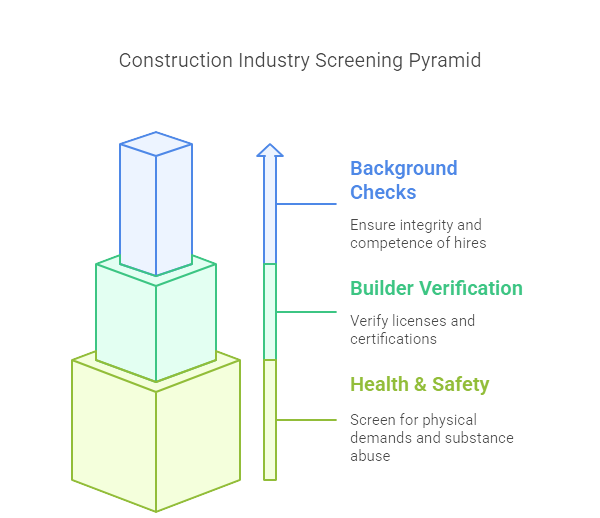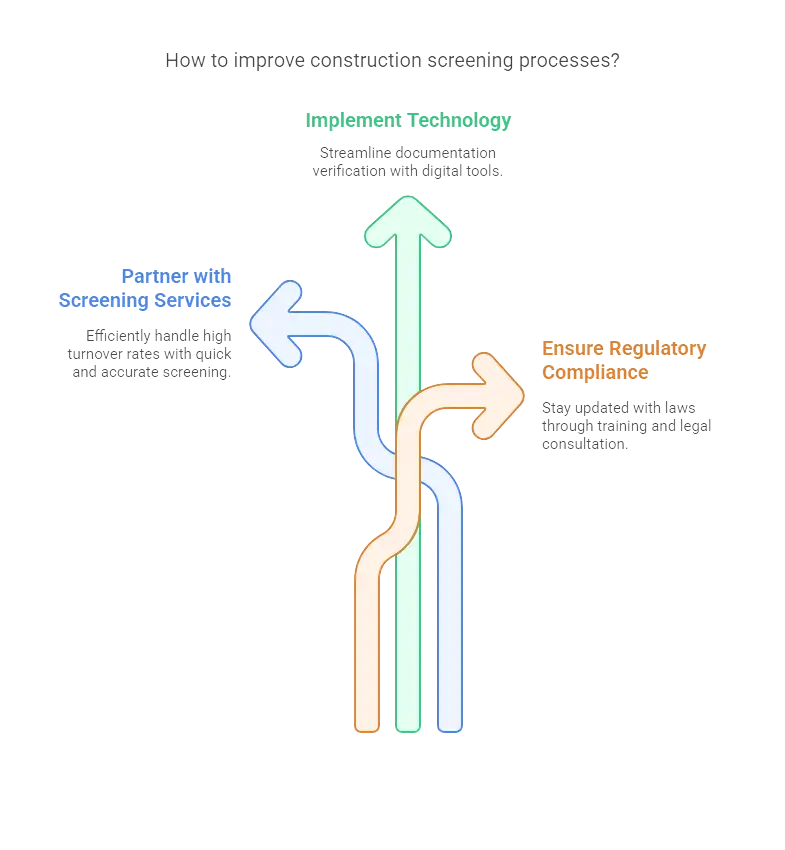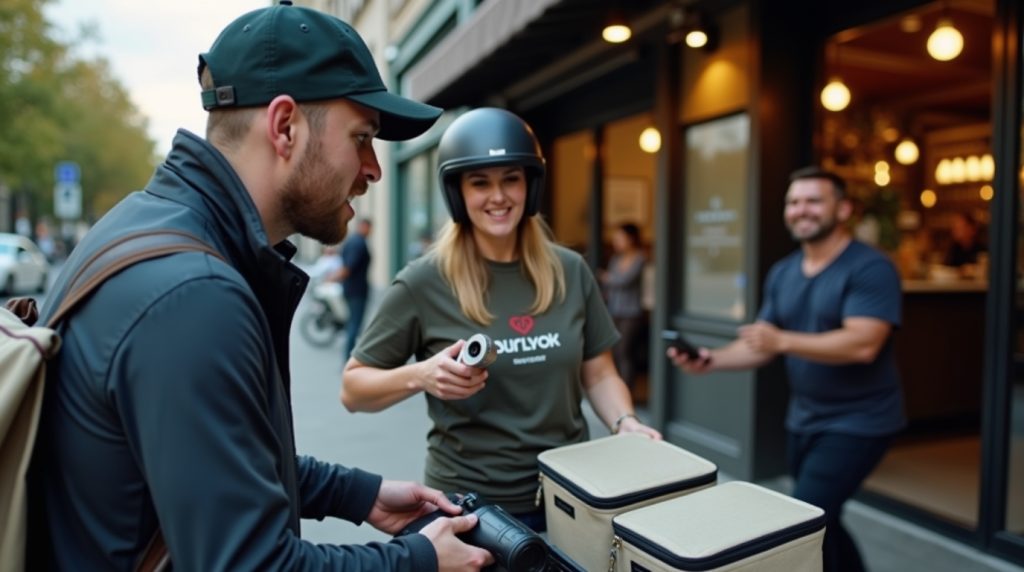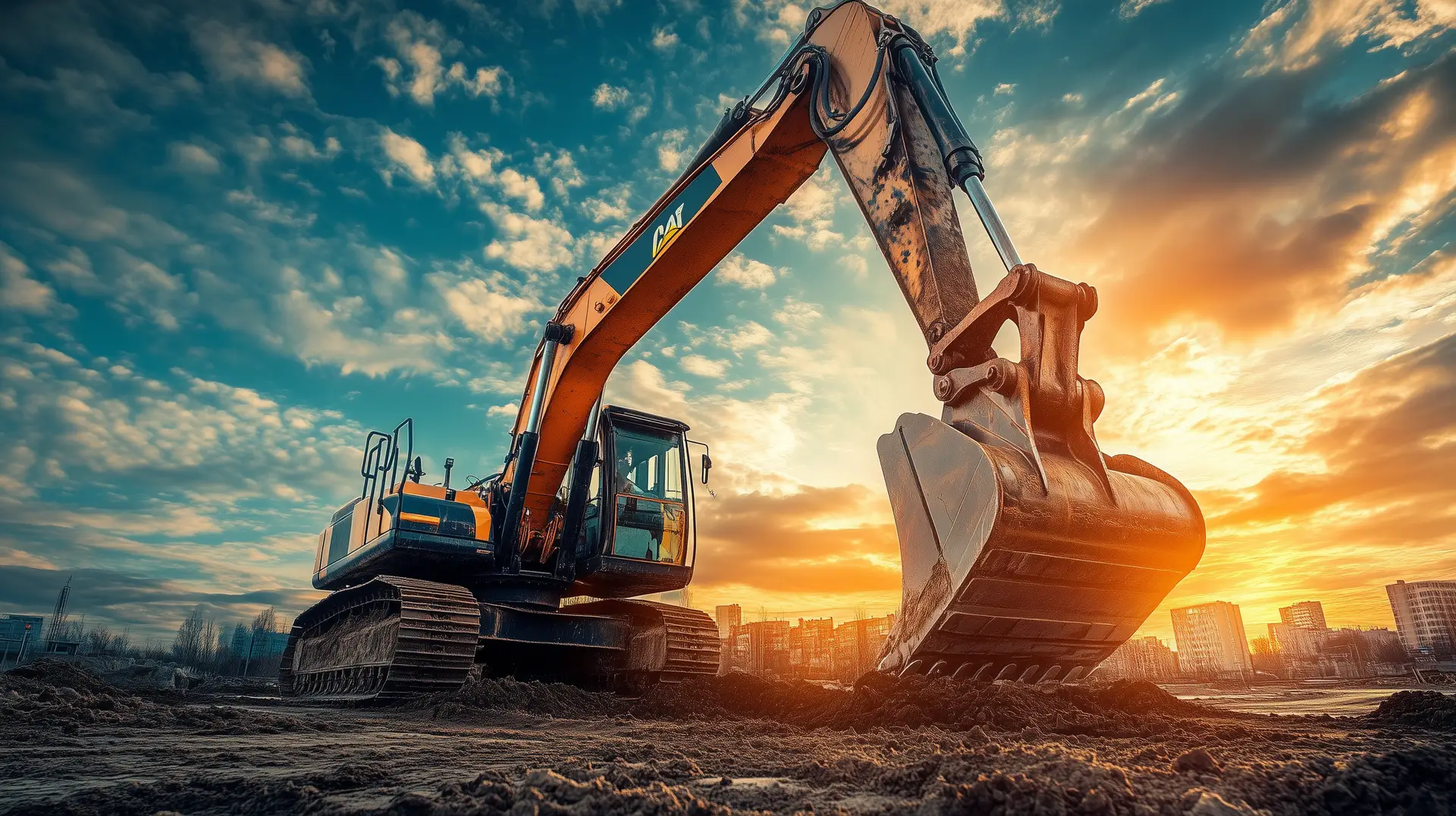The construction industry is one of the most dynamic yet hazardous sectors. Ensuring safety right from the hiring process is critical not only for the well-being of workers but also for the successful completion of projects. In this guide, we will delve into the intricacies of construction industry screening and provide actionable insights for recruiters and job seekers.
Key Takeaways
- Effective construction industry screening is essential for safety, involving comprehensive background checks, skills verification, and health evaluations.
- Screening benefits multiple stakeholders by reducing risks, ensuring compliance, and maintaining project timelines.
- Pre-employment background checks, including criminal, employment history, and reference checks, are crucial for hiring reliable and competent workers.
- Health and safety screenings, like pre-employment physicals and ongoing health monitoring, are vital for maintaining a safe and productive work environment.
- Regular safety audits and incident reporting are necessary for continuous improvement, ensuring safety protocols are followed and risks are minimized.
Introduction
Safety looms large in the construction industry. The nature of the job demands it—steel beams swing overhead and heavy machinery moves with purpose. Safety isn't just an add-on; it's the framework that holds everything together. This article dives deep into why the first step to safety begins with hiring the right people.
Construction industry screening is not just a buzzword; it's a necessity. We're talking about running background checks, verifying skills, and ensuring health and legal compliance. A solid screening process doesn’t just tick boxes; it sets the stage for smooth operations and project completion without a hitch.
In this article, we’ll cover the essentials of construction screening—from the nuts and bolts of pre-employment checks to ongoing health monitoring. Our aim? To create a blueprint for a thriving, safe, and productive work environment. Buckle up; we're going all in on how to build safety from the ground up.

Understanding Construction Industry Screening
Construction industry screening is a comprehensive process employed to ensure the suitability and safety of potential hires before they step onto a construction site. The screening encompasses various checks and measures aimed at evaluating a candidate’s background, qualifications, and physical fitness. Given the hazardous nature of construction work, this preliminary step is crucial for mitigating risks and safeguarding the workforce.
EXPERT INSIGHT: Working on construction sites and construction workers in real time, I have witnessed how a hiring process error can snowball into serious safety hazards. Screening is to be taken very seriously—it is our strongest defense in ensuring people go back home at day’s end. With every background check we run, every skills test we administer, and every health screening we perform is a promise to have people go back home safe in their boots at day’s end. For us in construction work, it begins a long time before boots touch ground—and as human resources professionals, it is our job to get it right early on. - Charm Paz, CHRP
Purpose
The primary purpose of construction industry screening is to prevent accidents, comply with legal and regulatory standards, and maintain project timelines. By filtering out unqualified or potentially harmful candidates early on, businesses can avert workplace injuries, costly litigation, and project delays. Effective screening ensures that only those who meet strict safety and competency standards are employed, thereby contributing to a productive and secure work environment.
Who Benefits?
A thorough screening process benefits multiple stakeholders within the construction industry:
- Business Owners: Reduced risk of accidents and liability claims, leading to potential cost savings.
- HR Professionals: Structured, repeatable processes for vetting candidates, ensuring compliance with industry standards.
- Recruiters: Improved ability to match the right candidates with the right roles, boosting overall project efficiency.
- Workers: Enhanced safety and morale, knowing that their colleagues are also competent and reliable.
Key Elements of Construction Industry Screening
1. Pre-Employment Background Checks
Background checks are the first line of defense to ensure the integrity and competence of potential hires.
- Criminal Background: The construction site often involves working with expensive equipment and in close-knit teams. Knowing a potential hire's criminal history is key to maintaining a safe and trusting environment. Check for violent crimes, theft, or any past behavior that could jeopardize site safety.
- Employment History: It's crucial to verify experience claims. Construction roles demand specific skills that come with hands-on experience. Contact previous employers to cross-check employment dates and job responsibilities. This avoids hiring individuals who might falsify their credentials to get the job.
- Reference Checks: Conversing with past employers can give insights into a candidate's reliability and skill level. Ask targeted questions about the candidate's teamwork, problem-solving abilities, and adherence to safety protocols. This can unearth red flags that standard background checks might miss.
2. Builder Verification
Licenses and Certifications:
Ensuring that all workers have the required licenses and certifications protects the company from legal trouble and ensures that the workforce is qualified.
- Skill Assessment: Practical tests and certifications are excellent methods to gauge a candidate’s ability. Simulation exercises or hands-on tasks during the interview stage can help evaluate their suitability for the role.
- Work Authorization: Verifying legal work status is non-negotiable. Adhering to labor laws and regulations not only avoids penalties but also ensures compliance. You can consult the DOL guidelines for accurate and up-to-date information on work authorizations.
3. Health and Safety Screening
Pre-Employment Physicals:
Physical exams are an effective way to determine if candidates can meet the physical demands of construction work. By screening for fitness levels, companies can reduce the risk of on-site injuries.
Drug and Alcohol Testing:
Regular substance abuse screening can play a significant role in maintaining a safe work environment. It's better to screen out candidates with substance abuse issues before they cause a potentially dangerous situation on-site.
Ongoing Health Monitoring:
Regular health check-ups can catch and address potential health issues before they become problematic. This ensures that workers remain in good shape to handle the demands of their roles, which benefits overall team productivity.
In sum, comprehensive construction industry screening is indispensable. Through diligent background checks, builder verification, and health safety screenings, companies can create a secure and efficient work environment. These practices not only protect workers but also enhance project success.

Best Practices for Construction Screening
Standardized Screening Processes
Every construction project is different but having a standardized process for screening candidates can save both time and headaches. Consistency is key — establish clear criteria for all potential hires to ensure they meet safety, skill, and regulatory standards. This not only speeds up the hiring process but also minimizes the risk of human error. By applying the same rigorous standards across the board, you can create a dependable and qualified workforce that upholds the high safety standards of your projects.
Use of Technology
Leveraging technology can transform your screening process from a cumbersome task to a streamlined operation. Tools like automated background checks, digital skill assessments, and online license verification platforms can drastically cut down on manual labor and reduce the chance of overlooking important details. For instance, integrating applicant tracking systems (ATS) with background check software can automate much of the vetting process, allowing HR professionals to focus on more complex evaluations.
Training and Education
Even the best screening tools and practices won't be effective without properly trained personnel to implement them. Invest in regular training for HR professionals and recruiters to keep them updated on the latest screening techniques and regulatory changes. This could include workshops on new technology, seminars on legal compliance, or on-the-job training for specific screening tasks. Knowledgeable staff are your first line of defense in building a safe, competent construction crew.
Site Safety Measures Post-Hiring
1. Onboarding and Training
Stepping onto a construction site without proper preparation is a recipe for disaster. Therefore, comprehensive onboarding and training are non-negotiable.
Safety Training: Kick off the onboarding process with a robust safety training program. Cover essential topics such as hazard identification, proper equipment use, and fall protection. These basics can save lives and prevent injuries. Tailor the training to your specific site conditions and job roles to ensure relevance and effectiveness.
Ongoing Education: Safety training isn't a one-and-done deal. Construction work and safety regulations are ever-evolving, which means continuous education is crucial. Offer regular refresher courses and up-to-date information on new safety protocols. This keeps your team sharp and informed, which reduces complacency and risk.
2. Safety Protocols and Equipment
Ensuring that safety protocols are in place and that workers have the right equipment is critical for maintaining a safe work environment.
Personal Protective Equipment (PPE): From helmets to high-visibility vests, PPE is a worker’s first line of defense against onsite hazards. Make sure every worker knows what equipment is required for their tasks and enforce its proper use. Regular checks and replacements of worn-out gear ensure maximum protection.
Emergency Procedures: Accidents can and do happen, no matter how prepared you are. Establish clear emergency procedures and ensure every worker is familiar with them. Conduct regular drills to reinforce the correct actions to take in the event of an emergency. This preparation can significantly reduce the impact of unexpected incidents.
3. Regular Safety Audits
Continuous monitoring is key to ensuring a safe work environment. Regular audits help identify issues before they escalate into serious problems.
Inspections: Conduct scheduled and surprise site inspections to assess compliance with safety standards. Look for common hazards, ensure equipment is maintained, and verify that procedures are being followed. Document findings and take immediate corrective actions where necessary.Incident Reporting: Having a robust incident reporting system allows for the quick identification of recurring issues. Encourage workers to report near misses and unsafe conditions without fear of reprisal. Analyze these reports to identify patterns and implement preventive measures, thus creating a culture of safety and continuous improvement.
Challenges and Solutions in Construction Screening
Common Challenges
One of the trickiest hurdles is dealing with high turnover rates, which are prevalent in the construction industry. Workers often move from project to project, leading to frequent hiring and a continuous need for thorough screening. This can strain resources and time, making it a persistent challenge for HR departments.
Another major challenge is the verification of documentation. Ensuring that licenses, certifications, and employment histories are genuine and up-to-date requires time and effort. In an industry where projects are often time-sensitive, delays caused by lengthy verification processes can be costly.
Compliance with ever-evolving regulations is equally challenging. Laws related to worker safety, employment, and immigration are constantly updated. Keeping up with these changes to avoid legal repercussions is a continuous task that requires attention to detail.
Potential Solutions
To tackle high turnover rates, partnering with specialized screening services can be a game-changer. These services are designed to handle high volumes efficiently and can provide quick turnarounds without sacrificing accuracy.
Implementing technology can streamline the documentation verification process. Tools such as digital credential databases and automated background check software can speed up the verification steps significantly. These technologies can cross-reference information quickly, reducing manual effort and human error.
For regulatory compliance, a dedicated team or software solution that tracks changes in laws and regulations can help. Regular training sessions for HR professionals on compliance requirements and updates can ensure the organization stays ahead of legal obligations. Additionally, consulting with legal experts specializing in construction industry regulations can provide valuable insights and help mitigate risks associated with non-compliance.
By addressing these challenges proactively with strategic solutions, construction companies can enhance their screening processes, ensuring a reliable and safety-first workforce.

Conclusion
Screening in the construction industry isn't just a checkbox—it's a cornerstone of project safety and success. From knowing who's stepping onto the site to ensuring they have the right skills and health to do the job, every step in the hiring process plays a critical role in keeping everyone safe. By prioritizing thorough and effective screening, business owners, HR professionals, and job seekers alike contribute to a safer, more reliable work environment.
For those in charge, take a hard look at your current practices. Are they comprehensive? Are they consistent? Investing in training for your HR team or consulting with specialized screening services could drastically enhance your procedures. Job seekers, make sure your credentials and health are up-to-date—this not only boosts your employability but also ensures you contribute to a safer workplace.
Remember, safety isn’t just a set of rules; it’s a culture that starts from day one. Now's the time to refine your screening processes, embrace best practices, and foster a working environment where safety is second nature.
Still have questions?
Get in touch with our team today for a personalized demo and discover how our tailored volume pricing and packages can drive results for your business!
How useful was this page?*
Note: your comments are anonymous. We use them to improve the website. Do not include any personal details.
Visit our FCRA Compliance Tool or leave a message here if you need a response.
From the blog Explore the GCheck Content Hub

Healthcare Background Screening Costs: 2026 Budget Planning Guide for Medical Facilities
30 Dec, 2025 • 23 min read
FACIS Background Check: 2026 Healthcare Compliance Guide
18 Dec, 2025 • 20 min read
Food Delivery Driver Background Check: Complete Compliance Guide for Restaurant Operators
17 Dec, 2025 • 17 min readThe information provided in this article is for general informational and educational purposes only and should not be construed as legal advice or a substitute for consultation with qualified legal counsel. While we strive to ensure accuracy, employment screening laws and regulations—including but not limited to the Fair Credit Reporting Act (FCRA), Equal Employment Opportunity Commission (EEOC) guidelines, state and local ban-the-box laws, industry-specific requirements, and other applicable federal, state, and local statutes—are subject to frequent changes, varying interpretations, and jurisdiction-specific applications that may affect their implementation in your organization. Employers and screening decision-makers are solely responsible for ensuring their background check policies, procedures, and practices comply with all applicable laws and regulations relevant to their specific industry, location, and circumstances. We strongly recommend consulting with qualified employment law attorneys and compliance professionals before making hiring, tenant screening, or other decisions based on background check information.


